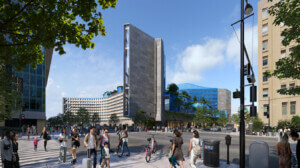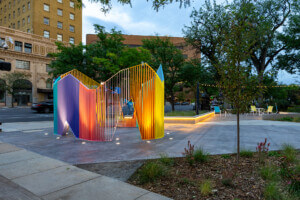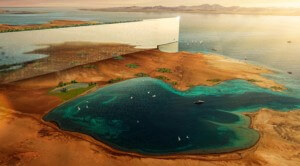How do you translate a “TED meets Burning Man” vibe into the design of a year-round property—as the investors behind Utah’s ski slope–adjacent Summit Powder Mountain are attempting to do in their 10,000-acre, billionaire-friendly planned mountain community? Summit, a company that organizes meetings, talks, and events with innovators and entrepreneurs, is discovering the difference between putting on a weekend conference and opening a permanent settlement: The latter requires a balancing act between vision, pragmatics, and the somewhat unpredictable dynamics between the individuals who choose to settle in such a place. The trick is to create a population density that can support amenities like restaurants, grocery stores, and public gathering areas. But what comes first, these amenities or homes for people to use them?
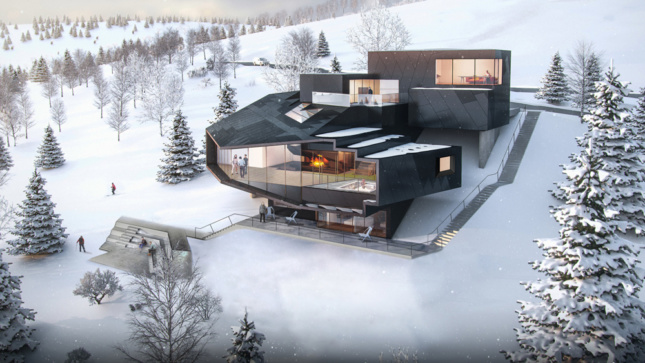
According to Benjamin Anderson of OFFICEUNTITLED, the architecture firm that finished the design of the development’s 2017 master plan and some of its buildings, the community has greatly benefitted from the addition of both 60 micro-condos in the village’s heart from millennial hospitality experts Selina and a ring of larger homes sited around the urban periphery. In keeping with Powder Mountain’s investors’ desire to escape a “whatever you build, I can build something bigger” mentality, owners of the larger homes are allowed up to 5,000 square feet each. While 5,000 square feet would feel enormous to most people, for billionaires, the limitation might require Spartan restraint—yet on average, homeowners usually choose floor plans of approximately 2,000 square feet. Combining a more rural sense of space around the larger homes and a more urban, closely packed experience facilitated by the micro-condos will, the planners hope, create enough density for year-round inhabitants to successfully activate the village. MacKay-Lyons Sweetapple Architects, Olson Kundig, Marmol Radziner, Studio Ma, JVA Arkitekter, and Tom Wiscombe Architecture are among the architects who have signed on to design some of Summit’s buildings.
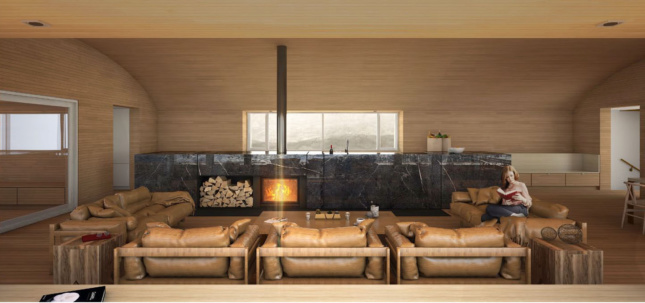
The developers behind Summit Powder Mountain wanted to include “as broad a sociodemographic spread as possible,” Anderson said. However, Selina’s 250-to-300-square-foot micro-condos, which were initially envisaged as lower-income housing on the mountain, have starting prices of $300,000, according to the Wall Street Journal. This disparity between vision and execution may make it impossible for the micro-condos to find their intended owners.
“Like a lot of master plans, it’s a bit of a living, breathing thing. We had to build in a tremendous amount of flexibility in each parcel,” Anderson said. “The last two years have been focused on developing that community and periphery inside and outside of the core that facilitates the development of the larger buildings.”
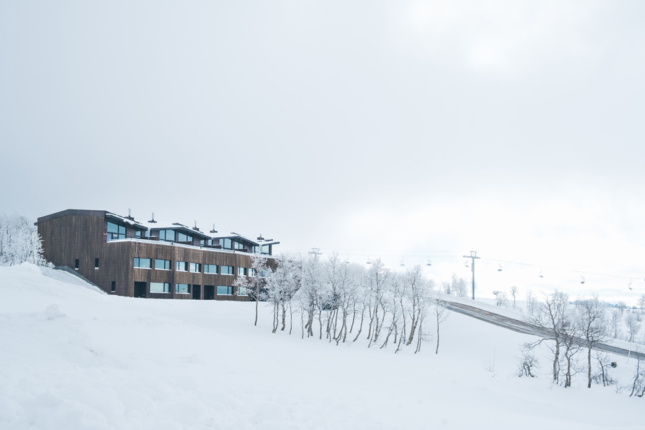
In an attempt to create dynamic urban density, the micro-condos are sited very close to Summit Institute, which hosts several winter events for year-round residents and serves as the organizational hub of the broader Summit community. It is here that events such as “Open Source Weekend” and “Winter Jam,” which features talks by some of the industry leaders who own property within the community, are held. The cost per adult for the three-day Winter Jam is $1,395, not including lodging.
The recent addition of housing is meant to meet the development’s goal to have at least 50 permanent, year-round residents, with a constant influx of visitors from the nearest town, Eden, as well as points beyond. Luckily, public transit options are available: There is currently bus service from several points on the mountain into Eden, as well as a connector line from Eden to a train in Odgen, which links to Salt Lake City. The intellectually curious and the luxury-ski-inclined alike can enjoy the evolving urbanism of this experimental mountain village.








